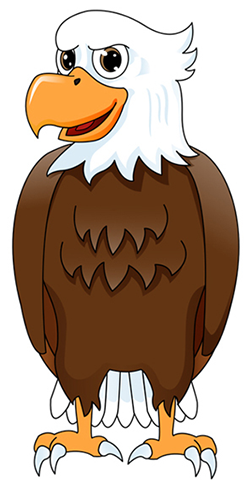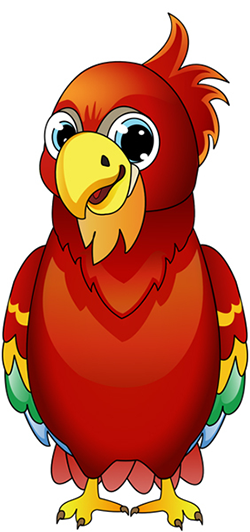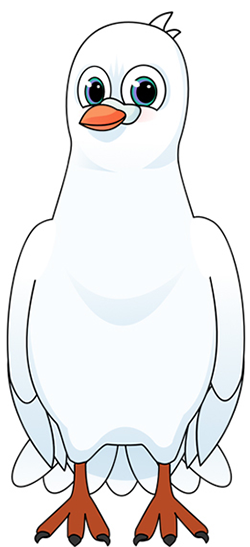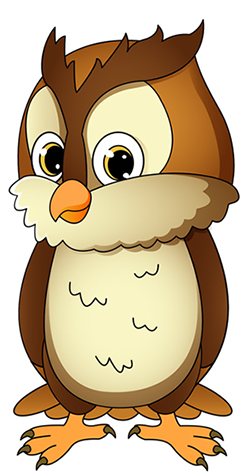Kids DISC Assessment
Fun. Insightful. Built on the trusted DISC framework.


Kids DISC was designed for kids, parents, teachers, and more
The Kids DISC assessment gives a deeper understanding of a child and their behavior. Created
especially for kids, using
language that they understand, the Kids
DISC report offers
significant insights based on the assessment. With three distinct
sections for kids,
parents, and teachers, this report contains helpful information for the children and the
adults in their lives.
A fun way for kids to understand themselves—and others
The Kids DISC assessment helps children aged 8-12 understand their unique behavioral styles
in a fun and memorable way! Using an
animated spin on the DISC
model, kids, and the adults
around them, will discover how special and unique they are. It uses four styles of
birds to
represent DISC Theory and capture each child's unique behavior:
Based on the DISC model, the report explains each child's behavioral style and why it makes
them special. It also helps them
understand people's differences.
Having a better
understanding of their own and others' strengths and areas for development, kids can
more
effectively navigate challenges, create stronger relationships, and improve communication
skills.
This DISC model assessment is backed by thorough research and validation to ensure
accurate results.
The Four Bird Styles
Why does Assessments 24x7 use birds to represent the DISC model? These colorful images make
each style easy to understand and fun
to remember. Kids connect
with what they represent,
making it an invaluable learning experience.
The Eagle
Motto: I got this!
When you picture an Eagle, what do you see? Eagles are powerful birds who fly high in
the sky above the forests, lakes, and rivers. They are at the top of the food chain! If
they see something they want... WHOOSH! They dive down and get it.
Kids with the Eagle style are confident, determined, and competitive. They say what they
think and do what they want. They take charge and take action. They make quick decisions
and aren’t afraid of risks. They love to win and hate to lose.
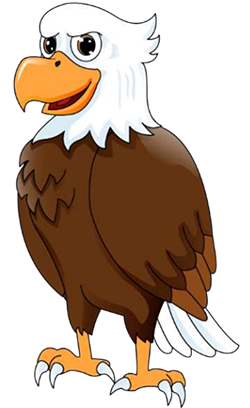
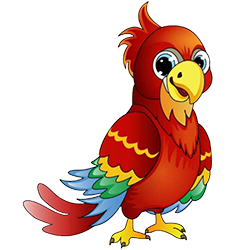
The Parrot
Motto: We can do it!
Imagine a Parrot in the canopy of the jungle with all their bird friends. Can you hear
the noisy Parrot cawing out loud? Do you see the bright, colorful feathers that attract
everyone’s attention? Can you picture all the fun that Parrot has flapping around with
other birds?
Kids with the Parrot style are enthusiastic, smiley, and social. They love to talk,
laugh, and joke around with friends. They try new things and come up with wild ideas. To
be a Parrot is to be the life of the party—and a bit of a mischief maker!
The Dove
Motto: Let's help each other!
Picture a white Dove on a shady, quiet tree branch. The Dove coos softly and kindly with
a few other birds. The Dove would never hurt anyone. The Dove is there to support other
birds and keep them out of trouble.
Kids with the Dove style are thoughtful, helpful, and caring. They love to do nice
things for others. They think about how others feel and always try to serve their needs.
Doves have big hearts and share their love freely.
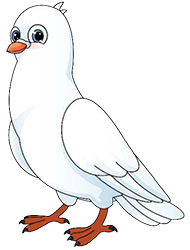
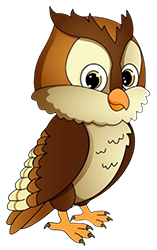
The Owl
Motto: Be smart about it!
Picture an Owl perched in a nest with wide-open eyes. The Owl notices every little
detail of the forest—every color, every animal, every gust of wind. The forest is
fascinating and fills the Owl with curiosity and questions. The Owl wants to know
everything.
Kids with the Owl style are precise, analytical, and careful. They have a reason for
everything they do and say. They are organized and consistent. They like to plan ahead
and learn everything they can before making decisions.
Benefits of the Kids DISC assessment
Understanding behavioral types with the Kids DISC assessment offers many benefits for students
in the classroom,
including
improved productivity and teamwork skills. Below are some additional advantages.
1. Self-Awareness
The Kids DISC assessment helps students understand their own strengths, preferences, and
communication styles. Like their avian counterparts, this self-awareness allows them to use
their strengths effectively and spot areas for growth. It encourages them to reflect on
their behaviors and adjust their approach when working in teams, leading to interpersonal
development and increased self-confidence.
2. Improving Communication
Communication becomes easier when kids understand their own and their peers' behavioral
traits. They can adjust their styles to improve collaboration and work more effectively with
their peers. For example, a Dove may focus on harmony, while an Eagle may communicate in a
clear and concise way. This leads to better teamwork and fewer misunderstandings in the
classroom.
3. Fostering Positive Relationships
Children can appreciate different and complementary perspectives when they understand their
own and their peers' behavioral types. They see that everyone has unique strengths and
approaches. This empathy fosters respect and collaboration in the classroom.
4. Supporting Academic and Social Development
Understanding behavioral types helps kids achieve academic success. The Kids DISC
assessment offers insights into their learning styles and teachers can use this information
to tailor learning experiences. This teaching framework helps students more easily grasp
concepts tailored to their learning styles, and encourages active participation in class.
Students can leverage their strengths more effectively, which often leads to improved grades
and greater school satisfaction.
5. Building Confidence and Resilience
Understanding different personalities helps kids build confidence. When they gain clarity
regarding their strengths, they feel more self-assured and realize it's okay to be
themselves. This confidence makes them more resilient; they handle challenges better and
have a tendency to bounce back quicker from setbacks.
Why birds instead of letters?
Merrick Rosenberg, CEO of Take Flight Learning, linked the four DISC profile styles to birds
in his books Taking Flight! and The
Chameleon. Eagles
represent
the Dominant (D) style,
Parrots the Interactive (I) style, Doves the Supportive (S) style, and Owls
the
Conscientious (C) style. This approach provides a more memorable way to learn the different
behavioral types.
Since 65% of people learn visually, using birds makes the styles
more vivid. People,
particularly visual learners, need to
remember the styles
effectively to use them, and the
birds make this easier than memorizing letters.
For example, an Eagle's confident and assertive nature is easily associated with the
Dominance Style. The bird symbols are
intuitive, making it simple
for people to instantly
connect the birds with what they represent.
Strong foundations help support
a bright future
Birds represent the behavioral styles of Kids DISC, and just like our internationally
recognized DISC Self assessment, no single bird (DISC Style) is the “right” one to
be.
All the Birds have strengths and challenges. However, one thing is certain: They
help
make up who we are, enabling each of us to lead happy and productive lives.

Choosing Assessments 24x7
as your Kids DISC assessment provider
The Kids DISC Assessment provides an opportunity for children to learn more about
themselves! Inside the report, kids and the adults around them will discover how special and
unique they are. Each child’s bird style is their superpower, and the Kids DISC assessment
by Assessments 24x7 helps them be the best that they can be.
Assessment 24x7 offers a comprehensive and reliable analysis of DISC Styles. The assessments
are detailed and tailored to suit different needs. Customers receive accurate and actionable
insights, which help in personal and professional growth. Using these assessments,
organizations can improve teamwork and communication. They are easy to administer and
interpret. Assessment 24x7 provides support throughout the process, ensuring a smooth and
effective experience for all users.
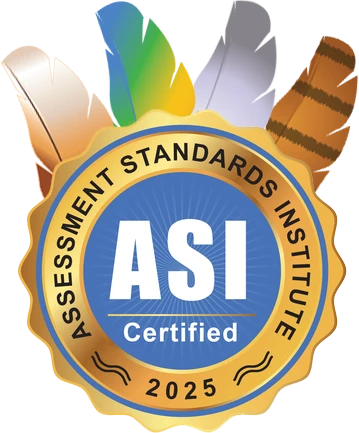
Validated, reliable, compliant
A scientific solution for professionals
Our assessments are leading by example with independent validation meeting APA, EEOC, AERA,
and NCME standards. Our goal is to
ensure the trust of both our
members and end-users alike
by providing the most accurate and reliable assessments available. This is
why we believe in
a policy of total transparency, with every study's report available for your review, and
available to be shared with
your clients and colleagues. In an
apples-to-apples comparison,
we believe our assessments and reports will prove to be the top
choice among industry
professionals who value accuracy, compliance, and objectivity.

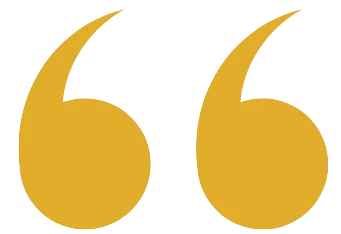
Everyone working with children should incorporate the What is your Bird Style? -
Kids
DISC assessment from Assessments 24x7! Understanding the basic foundation
of differences
in behavioral styles was an eye opener for our staff. Then applying
this to the various
styles of our students has dramatically improved the overall
communication, and
specifically one on one instruction. We even watch the kids talk
amongst themselves
regarding their Bird Styles. Exceptional, thank you!"
- Julie Sand, Pioneer Junior High School
Frequently Asked Questions
What age is the Kids DISC assessment designed for?
The Kids DISC assessment is designed for children ages 8 to 12. This age range ensures that the
language and concepts are easy to understand. The assessment helps kids learn about their
personalities and also provides insights for parents and teachers. This way, everyone can
encourage the child to grow and thrive.
How long does it take to complete the Kids DISC assessment?
Most children find the Kids DISC assessment takes 10 to 15 minutes to complete. The questions
are simple and fun; children answer based on what they like and how they act. This quick
process keeps them engaged. Parents and teachers can review the results right after completion.
Is the Kids DISC assessment accurate?
Yes, the Kids DISC assessment is accurate. The assessment uses a 24-question DISC model
questionnaire. Learners will answer questions about their behaviors and preferences. This
assessment is based off of our scientifically validated DISC Self assessment.
Can I use the Kids DISC assessment for team building?
Yes, the Kids DISC assessment is an excellent tool for team building. It helps kids learn about
their peers and how they have different strengths and communication styles. This knowledge leads
to better collaboration, reduces conflicts, and fosters a positive environment. The assessment
supports creating productive teams, and teachers can use it to improve group work. The insights
promote respect and understanding among team members.
